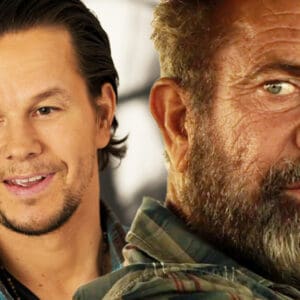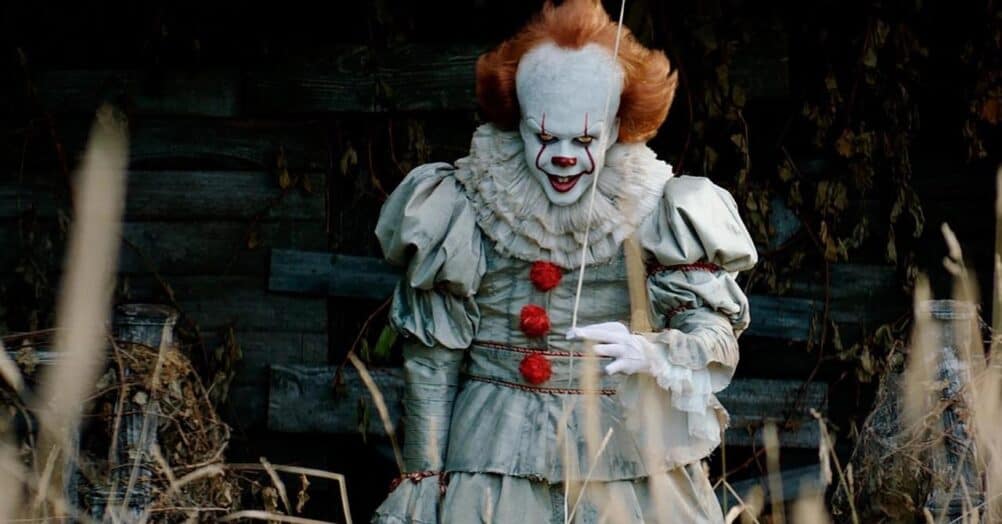Last Updated on December 3, 2024
In 2006, Mel Gibson was just about the most controversial guy in Hollywood. But he was, let’s all admit it, still an icon of the screen. As such, some people still had a lot of faith in him. And that faith would be translated in Hacksaw Ridge. There was the faith of its central figure, Desmond Doss; that which the producers and studio put into Gibson; and that which Gibson himself had in the project, which would tell of a conscientious objector during World War II. A gamble? Absolutely. A success? Unprecedented. So pick up that weapon, soldier – or, better yet, be at ease – as we find out: What Happened to This Movie?!
Hacksaw Ridge centers around the real-life figure of Desmond Doss, who served as a medic during World War II and became famous for his refusal to carry a weapon. Even still, he is credited with saving 75 lives while in action. As he once said, “God convicted me not to kill. If somebody else is convicted by God to kill, I pass no judgment on that person.” This stems from his being a Seventh-day Adventist, a denomination also shared by filmmaker Terry Benedict, who directed the 2004 documentary THE CONSCIENTIOUS OBJECTOR, which Mel Gibson actually screened for the cast/crew ahead of production. Such a key figure during the war, Doss – a member of the 307th Regiment, 77th Infantry Division –went on to be awarded the Medal of Honor.
Desmond Doss was well aware just how enrapturing his story was, but was also worried that his story would focus too much on him and not the faith that drove him. The story seemed destined for the big screen, but Doss was turning it down every chance he got, even rejecting iconic Casablanca producer Hal B. Wallis directly. As the decades went by, it seemed like the story would never be fleshed out for the screen, with rights being pitched and passed.

With the turn of the century, however, came more interest; thus, Benedict’s aforementioned documentary. But there would be a push for a narrative version. Producer Bill Mechanic eventually secured the rights, initially collaborating with Walden Media (the studio aimed at faith-centric, sometimes overtly Christian-leaning fare, whose most notable movies include Holes and Because of Winn-Dixie) who had desires to make the film PG-13, which doesn’t exactly fly in a WWII film, perhaps especially so if it’s focusing on the work of a medic…Gregory Crosby (the grandson of crooner Bing) wrote the initial treatment, soon having a vital role in convincing Desmond Doss to let his story be put on the big screen. The first draft came in the mid-2000s, with Pulitzer Prize winner Robert Schenkkan (The Kentucky Cycle; HBO’s The Pacific) behind the project, rewrites by Randall Wallace (Oscar nod for Braveheart; Pearl Harbor) and additional work by Andrew Knight (The Water Diviner). Schenkkan and Knight would get final credit.
So, who would direct? Mel Gibson – who hadn’t directed a film since 2006’s Apocalypto – was actually initially interested but passed on the project. But Mechanic was diligent in his efforts to land Gibson, who was on major outs with Hollywood, what with the racist and anti-Semitic rhetoric, misdemeanour battery charges and drunk driving arrest…As Mechanic put it, “If you took BRAVEHEART and THE PASSION OF THE CHRIST, the intersection gives you Desmond Doss.” With unending persistence, Gibson finally relented and agreed to direct Hacksaw Ridge.
It would then come time to cast Desmond Doss, who passed away in 2006. For the role of the conscientious objector – sometimes called a “conscientious cooperator” – Andrew Garfield would seal it. Garfield was immediately drawn to Doss, who gave him a new hero to portray after playing Spider-Man. As Garfield put nit, “It’s a pretty wild time we’re in. There’s a lot of violent uprising and separating and warring ideologies that are plaguing our beautiful planet right now. And I think Desmond Doss is a wonderful symbol of embodying the idea of live and let live no matter what your ideology is, no matter what your value system is, just to allow other people to be who they are and allow yourself to be who you are. That was really his core value, and to operate from a place of love.”
Other key cast members would be Sam Worthington as Captain Jack Glover, Luke Bracey as “Smitty” Ryker, Hugo Weaving and Rachel Griffiths as parents Tom and Bertha, Teresa Palmer as wife Dorothy, and Vince Vaughn as Sergeant Howell. Notice anything about a lot of these actors? Most are Aussies! That’s because the film was shot exclusively in Australia. This goes back to one of life’s guarantees: taxes. Australian tax incentives were in place, but after they were yanked, the film had to officially be marked as at least partly an Australian production before they could get additional funding. Thankfully it did, and shooting in Australia gave the team the perks of filming “72 cents on the dollar”, as Gibson put it. This would come in handy, as Hacksaw Ridge had a budget of just $40 million. Compare that to Braveheart 20+ years earlier, which had a budget north of $70 million!

Filming – which lasted from September 29th, 2015 until December of that year – took place in a variety of locales across the Land Down Under, including the Fox Studios soundtrack in Sidney, Richmond, Orna Park, Centennial Park, and Newington Armory at Sydney Olympic Park, which stood in for Fort Jackson. Extensive filming in New South Wales reportedly brought in nearly $20 million and generated over 700 jobs in the area. On the more controversial side, Bringelly in New South Wales saw an environmental protest after they found out the production team had removed more than six dozen trees, including native eucalyptus. And that wasn’t the only way they were changing the landscape, as production designer Barry Robison was in charge of raising land so they could get a full 360-degree view without catching any local foliage or landmarks in the shot, as well as transforming a plot of land in Australia into Doss’ hometown of Lynchburg, VA. For anything else they couldn’t do with bulldozers, they brought in massive smoke machines to conceal backgrounds. And yes, that’s a pasture near Sydney standing in for Okinawa, the site of the namesake battle.
Speaking of battles, in the pre-production phase, Gibson did extensive storyboards and toyed with 8×12-foot models so he could get the feel for blocking and filming them, as he wanted the film to look and feel “visceral…tight, chaotic.” Cinematographer Simon Duggan helped contain the action on the battlefields using the Alexa with Panavision Primo Anamorphic Prime lenses, and the Red for handheld shots. He even used pocket cameras to up the intensity and nail Gibson’ “informed chaos.”
So why not just use green screens and other SFX? Gibson insisted on authenticity, leaning towards practical effects whenever possible. They even cast a man who lost his legs in the war in Afghanistan instead of doing the Lt. Dan route. However, some work – such as napalm wounds – had to be done via computers.
The sound design would also be reworked to better suit the film’s needs. While period-appropriate weaponry and ammo were used, the sound design had to intensify and amplify all of it because of how those particular weapons sounded in real life – that is, tinny and without the power needed for the big screen. Gibson himself had some fun with the effects, even sneezing and yelling into the mic to create a unique effect found in no other movie before or since. Also on the sound front, Hacksaw Ridge was supposed to be scored by James Horner (nominated for the Best Original Score Oscar for Braveheart), but was replaced by John Debney after Horner’s June 2015 death. Debeney himself was later replaced by Rupert Gregson-Williams after his score was not deemed satisfactory.

But historical accuracy, by and large, was a chief goal for the cast and crew of Hacksaw Ridge. This was something Desmond Doss himself had been concerned with regarding cinematic adaptations of his story, so Gibson and his team made it their mission. There are some slips to be sure (Doss’ brother Harold served in the Navy and not the Army, for example) and Gibson had to refrain from including a few key moments – chiefly one involving stretchers and bullets, which sounds simultaneously brutal and goofy – because they would be too Monty Pyhtonesque and not believable, even if they really did happen. There, too, are amalgamations and choices for dramatic effects – in other words, nothing really out of the ordinary for a biopic.
After seeing Hacksaw Ridge, Desmond Doss’ own son said, “I just couldn’t believe it. I was just completely taken by it. I thought I was watching my mother and my father.” That’s the sort of compliment you can’t fake or diminish the impact of. With Hacksaw Ridge, Mel Gibson wanted to make a “five-star flick” about Desmond Doss…So, did he pull off that feat?
Hacksaw Ridge had its premiere on September 4th, 2016, nearly one year after filming first started. This occasion, an out-of-competition screening at the 73rd Venice Film Festival, resulted in a standing ovation, immediately kicking off Oscar buzz. And it kept generating, resulting in three Golden Globe nominations (Best Picture, Best Director, Best Actor), and six Oscar nominations, including Best Picture, Best Director for Mel Gibson and Best Actor for Andrew Garfield. It would win two: Best Film Editing and Best Sound Mixing
As for its box office numbers, it pulled in $15.2 million on opening weekend, landing at #3 just behind Marvel’s Doctor Strange and DreamWorks’ Trolls. And that’s where it would peak, ending its run with $67 million domestically and $113 on the international market for a total of just over $180 million, well over its $40 million budget. Nearly a decade on, it holds an 84$% on Rotten Tomatoes and a 3.9 on Letterboxd, even better than Best Picture winner Braveheart.
Nobody saw it coming, but Hacksaw Ridge cracked the door back open for Mel Gibson, who all of a sudden was being seen on the big screen again. Hell, he might even be playing Riggs for another Lethal Weapon! As for his directing career, he has his sixth feature, Flight Risk, lined up for 2025.



















Follow the JOBLO MOVIE NETWORK
Follow us on YOUTUBE
Follow ARROW IN THE HEAD
Follow AITH on YOUTUBE